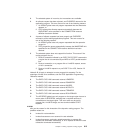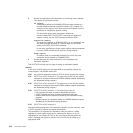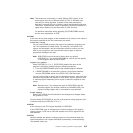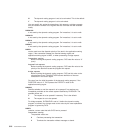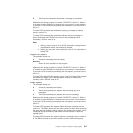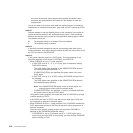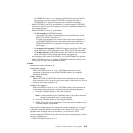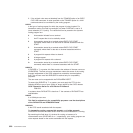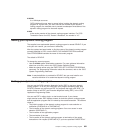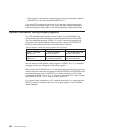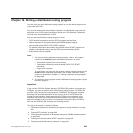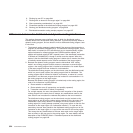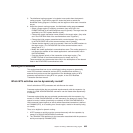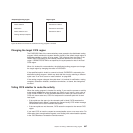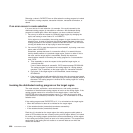
DYRUSERN
is a 1024-byte user area.
CICS initializes this user area to zeroes before invoking the dynamic routing
program for a given task. This user area can be modified by the dynamic
routing program; the modified area is passed to subsequent invocations of the
dynamic routing program for the same request.
DYRVER
is the version number of the dynamic routing program interface. For CICS
Transaction Server for z/OS, Version 3 Release 2, the number is “10”.
Naming your dynamic routing program
The supplied, user-replaceable dynamic routing program is named DFHDYP. If you
write your own version, you can name it differently.
After the system has been loaded, to find the name of the dynamic routing program
currently identified to CICS, use the EXEC CICS INQUIRE SYSTEM command.
Field DTRPROGRAM contains the name of the current program.
The default is DFHDYP.
To change the current program:
v Use the DTRPGM system initialization parameter. For more guidance information
about how to do this, refer to the CICS System Definition Guide.
v Make the change online using the EXEC CICS SET SYSTEM DTRPROGRAM
command. For programming information about this command, refer to the CICS
System Programming Reference.
Note: A sample definition is provided for DFHDYP, but you must install a new
resource definition for a customized dynamic routing program.
Testing your dynamic routing program
You can use the CICS execution diagnostic facility (EDF) to test your dynamic
routing program. To do so, you must name your program something other than
DFHDYP, because you cannot use EDF for programs that begin with “DFH”. For
details of how to use EDF, see Execution diagnostic facility (EDF), in the CICS
Application Programming Guide.
You can use EDF in either single- or dual-terminal mode. If you choose
single-terminal mode, EDF displays screens for both the dynamic routing program
and the application program that is invoked by the routed transaction. The screens
relate to:
v The initial invocation of the dynamic routing program for route selection or
notification (DYRFUNC=0 or DYRFUNC=3)
v The invocation of the dynamic routing programm if an error occurs in route
selection (DYRFUNC=1)
v The invocation of the application program
v The termination of the task
v The invocation of the dynamic routing program at termination of the routed
transaction or link request (DYRFUNC=2), if you have specified DYROPTER=Y
Chapter 17. Writing a dynamic routing program 621



